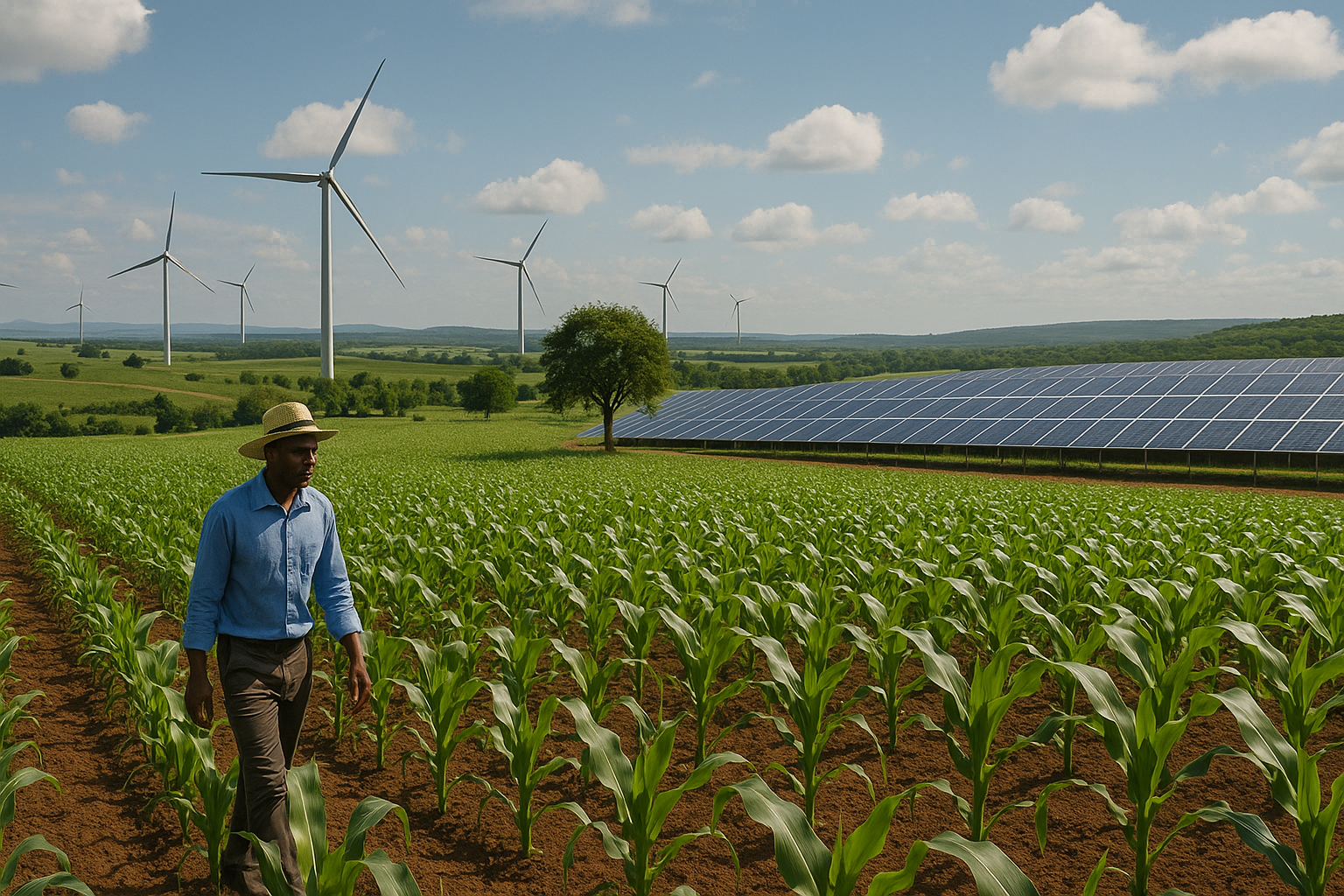How Economic and Climate Resilience Shape Long-Term Sustainable Growth Worldwide
The study by the Asian Development Bank and partner universities finds that both economic and climate resilience significantly boost sustainable economic development, though their effects vary by a country’s development stage. Climate resilience delivers universal, long-term benefits, while economic resilience offers stronger gains for less-developed nations but shows diminishing returns in advanced economies.

The Asian Development Bank, in collaboration with scholars from the Islamic University in Bangladesh, Linköping University in Sweden, the University of Texas at El Paso in the United States, and the ADB’s Economic Research and Development Impact Department, has produced a detailed working paper that examines how nations’ capacity to withstand and recover from both economic shocks and climate-related disasters influences their progress toward long-term prosperity. Drawing on data from 31 countries between 2007 and 2021, the authors employ an array of advanced econometric techniques, panel-corrected standard errors, feasible generalized least squares, panel quantile regression, and local projection impulse response functions, to identify how resilience affects sustainable economic development (SED). The Human Development Index (HDI) serves as the primary measure of SED, while the Swiss Re Institute’s Economic Resilience Index (ERI) and the Notre Dame Global Adaptation Initiative’s Climate Readiness Index (CRI) capture the two dimensions of resilience. The findings show that both economic and climate resilience matter deeply, though their influence differs depending on a country’s stage of development and over time.
Economic Resilience: A Nuanced Driver
The study frames its analysis within the context of the United Nations’ 2030 Agenda for Sustainable Development, warning that the path to achieving the 17 Sustainable Development Goals is threatened by financial crises, pandemics, geopolitical instability, and intensifying climate change impacts. Economic resilience, defined as an economy’s ability to absorb and recover from disruptions without derailing long-term growth, emerges as an important but nuanced driver of SED. In less-developed nations, boosting ERI yields substantial benefits, enabling quicker recovery from recessions, debt shocks, and supply chain disruptions. In the most advanced economies, however, the benefits taper and can even turn negative, suggesting that beyond a certain threshold, other priorities, innovation, environmental protection, and social welfare, become more decisive for further progress. The research warns against assuming that more economic resilience is always better; rather, strategies must be adapted to each nation’s development stage to avoid diminishing returns.
Climate Resilience: A Universal Benefit
By contrast, climate resilience emerges as a consistently positive force for sustainable development, regardless of a country’s economic maturity. The CRI measures a nation’s preparedness to adapt to climate risks, from extreme weather events to resource depletion. The analysis shows that investments in climate resilience, such as strengthening environmental governance, upgrading disaster preparedness, and developing climate-adaptive infrastructure, deliver enduring benefits across the board. Gains tend to build more slowly than those from economic resilience but persist over a longer horizon, reflecting the lag before environmental measures fully translate into improved health, livelihoods, and economic stability. The study positions climate resilience as a universal public good: it protects vulnerable communities in developing countries and shields advanced economies from mounting climate risks that no amount of wealth can fully neutralize.
Trade, Finance, and the Resource Dilemma
The research also highlights the role of complementary factors. Trade openness and financial development are consistently linked with stronger SED outcomes, acting as enablers of innovation, technological transfer, and capital mobilization. Open trade policies give countries access to global markets and the opportunity to diversify their economies, while robust financial systems help fund sustainable infrastructure and social investments. Yet the paper also identifies two persistent obstacles: heavy dependence on natural resources and certain forms of gross fixed capital formation. The so-called “resource curse” manifests when resource wealth fuels economic volatility, institutional weakness, and environmental damage, ultimately slowing sustainable development. Similarly, capital investment directed toward extractive or environmentally harmful industries undermines long-term progress, even if it boosts short-term GDP. While economic growth is generally positive for SED, the study notes a nonlinear relationship; at higher stages of development, growth can exacerbate environmental degradation and social inequality, eroding overall development quality.
Dynamic Impacts and Policy Lessons
Using local projection impulse response functions, the authors chart the dynamic effects of resilience and related factors on SED. Positive shocks to economic resilience produce immediate and significant gains that peak within four to five years and remain for a decade. Climate resilience shocks yield slower but steadily growing benefits, becoming statistically significant around the third year and persisting over a 12-year span. Trade openness and financial development similarly sustain benefits over the medium to long term, while the drag from resource dependence proves both persistent and resistant to short-term remedies. From these patterns, the policy implications are clear: countries should integrate both economic and climate resilience into their development strategies, tailoring their focus to the developmental stage. Lower-HDI nations should prioritize building fiscal strength, economic diversification, and institutional capacity to maximize the quick returns from ERI, while advanced economies should shift emphasis toward quality growth, innovation, and environmental sustainability. Across all contexts, investments in climate resilience are high-yield commitments to future prosperity, not mere expenditures. The study urges that capital spending be channeled toward renewable energy, green infrastructure, sustainable urban development, and socially inclusive projects, while resource-rich nations adopt sustainable resource management and diversification strategies.
The HDI, while a widely accepted proxy for sustainable development, does not capture environmental dimensions, leaving out indicators such as carbon emissions or ecological footprints. The authors call for future work to integrate more environmental metrics, broaden the sample to include more countries, and compare resilience–development dynamics across different economic groupings. Even with these caveats, the message is compelling: resilience, both economic and climate, is not a luxury, but a necessity for securing long-term development in a world where crises are increasingly interconnected. Policymakers are challenged to act boldly and early, recognizing that resilience investments generate compounding returns over decades, safeguarding human well-being, economic stability, and planetary health.
- FIRST PUBLISHED IN:
- Devdiscourse










